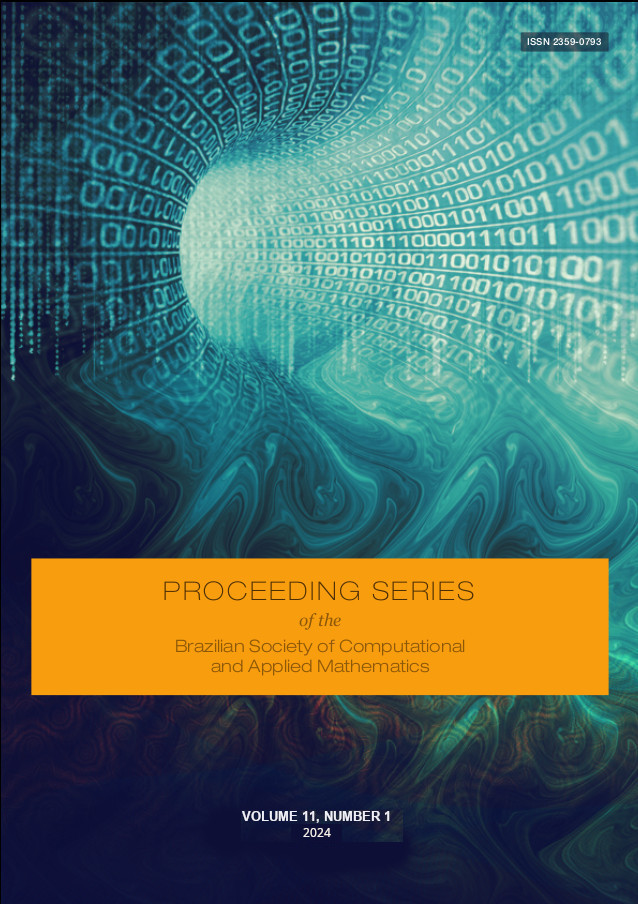Fractional model in dengue with real data
DOI:
https://doi.org/10.5540/03.2025.011.01.0401Palabras clave:
Fractional modeling, Sensitivity Analysis, Parameter Estimation, Real dataResumen
The aim of this study is to bring forward a fractional model for Dengue, incorporating the effects of temperature and rainfall variations throughout the year. In addition, real data from Dengue cases in the city of Bauru, state of São Paulo, Brazil, were used to estimate the case curve with the fractional model using the Intraclass Correlation Coefficient (ICC) to measure the estimation accuracy. The results showed that the parameter estimation of the fractional model has a higher ICC than the numerical simulations of the classical model, demonstrating greater accuracy of the fractional model. Furthermore, a sensitivity analysis of the R0 parameters was carried out using the Partial Rank Correlation Coefficients (PRCC) method to evaluate which parameters have the greatest influence on the increase or decrease in the basic reproduction number. According to the sensitivity analysis carried out, we can conclude that the most effective control to reduce R0 are the efforts directed to the vector.
Descargas
Citas
Agritempo: Sistema de monitoramento agrometeorológico (2002–2024). Available at https://www.agritempo.gov.br/agritempo/index.jsp. Accessed: 10 Oct. 2023.
R. F. Camargo, R. Charnet, and E. C. Oliveira. “On some fractional Green’s functions”. In: Journal of Mathematical Physics 50.4 (2009), p. 043514.
L. C. Cardoso, F. L. P. Dos Santos, and R. F. Camargo. “Analysis of fractional-order models for hepatitis B”. In: Computational and Applied Mathematics 37.4 (2018), pp. 4570–4586.
D. V. Cicchetti. “Guidelines, criteria, and rules of thumb for evaluating normed and standardized assessment instruments in psychology.” In: Psychological assessment 6.4 (1994), p. 284.
M. M. Costa. “Investigação dos efeitos da sazonalidade e da mobilidade humana na dinâmica de transmissão da dengue em patches”. PhD thesis. 2022.
G. Cruz-Pacheco, L. Esteva, and C. P. Ferreira. “A mathematical analysis of zika virus epidemic in Rio de Janeiro as a vector-borne and sexually transmitted disease”. In: Journal of Biological Systems 27.01 (2019), pp. 83–105.
L. Esteva and H. M. Yang. “Assessing the effects of temperature and dengue virus load on dengue transmission”. In: Journal of Biological Systems 23.04 (2015), p. 1550027.
J. H. Huber, M. L. Childs, J. M. Caldwell, and E. A. Mordecai. “Seasonal temperature variation influences climate suitability for dengue, chikungunya, and Zika transmission”. In: PLoS neglected tropical diseases 12.5 (2018), e0006451.
S. Marino, I. B. Hogue, C. J. Ray, and D. E. Kirschner. “A methodology for performing global uncertainty and sensitivity analysis in systems biology”. In: Journal of theoretical biology 254.1 (2008), pp. 178–196. doi: 10.1016/j.jtbi.2008.04.011.
M. Martcheva. An introduction to mathematical epidemiology. Vol. 61. Springer, 2015.
H. Nishiura et al. “Mathematical and statistical analyses of the spread of Dengue.” In: (2006).
R. Pakhira, U. Ghosh, and S. Sarkar. “Study of memory effects in an inventory model using fractional calculus”. In: Applied Mathematical Sciences 12.17 (2018), pp. 797–824.
P. Rohani and M. Keeling. Modeling Infectious Diseases in Humans and Animals. Princeton, New Jersey: Princeton University Press, 2008.
A. Salarian. Intraclass Correlation Coefficient (ICC). https://www.mathworks.com/matlabcentral/fileexchange/22099-intraclass-correlation-coefficient-icc. 2022.
M. M. Theodoro. “Modelagem Fracionária da dinâmica da COVID-19”. In: (2022).
Centro de Vigilância Epidemiológica “Prof. Alexandre Vranjac”. Dados estatísticos em Dengue - Distribuição dos casos notificados e confirmados. Available at https://www.saude.sp.gov.br/cve-centro-de-vigilancia-epidemiologica-prof.-alexandre-vranjac/areas-de-vigilancia/doencas-de-transmissao-por-vetores-e-zoonoses/arboviroses-urbanas/dengue/dados-estatisticos. Accessed: 11 Dec. 2023.

